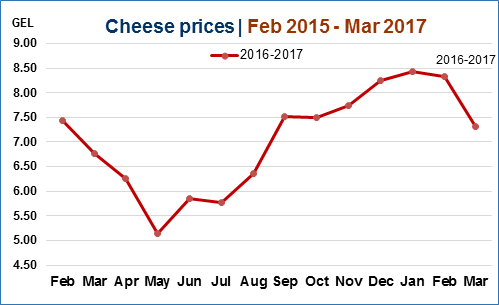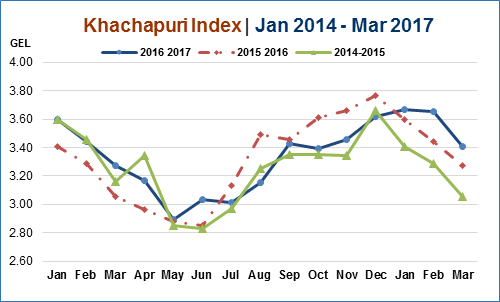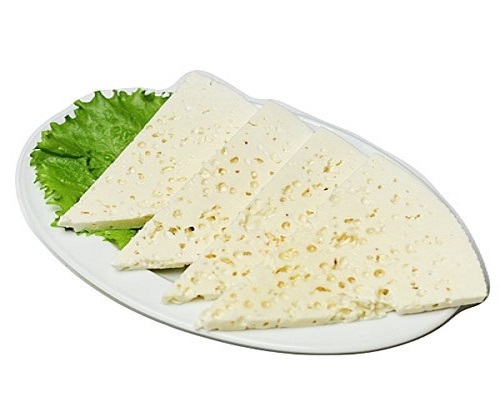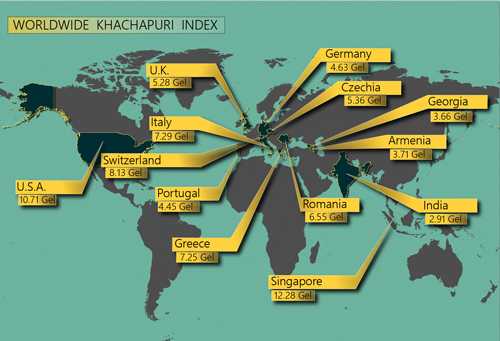- Details
In March 2017, the national average price of cooking Imeretian khachapuri declined to 3.41 GEL, which is 6.9% lower compared to the previous month (February 2017), and 4.1% above its value a year ago (March 2016).
Such a noticeable monthly decline in the price of khachapuri is driven by the seasonal adjustment in the price of cheese, which stood at 7.31 GEL in March 2017, and is 12.2% below last month’s value (February 2017). As mentioned in a previous publication, this year the price of milk started its seasonal decline in March. The Easter effect, more specifically Great Lent (which began on February 27th) might have strengthened the downward price trend, as demand on cheese and other milk products is lower during the Lent period.
- Details
In March 2017, the average cost of cooking one standard Imeretian khachapuri dropped to 3.41GEL, which is 6.9% lower month-on-month (compared to February 2017), and 4.1% higher year-on-year (compared to March 2016).
In general, at this time of the year (beginning as early as February), we observe the start of a seasonal reduction in the price of khachapuri, driven by the seasonal decline in milk prices. According to Khachapuri Index data from recent years, this downward trend continues from February until late June, and sometimes even through July. The Khachapuri Index data from 2012 through 2017, confirms this same trend every year.
- Details
In February 2017, the average cost of cooking one standard Imeretian khachapuri decreased to 3.66 GEL, which is 0.2% higher month-on-month (compared to January 2016), and 6.2% higher year-on-year (that is, compared to February 2016). The main contributors to the y/y Khachapuri Index inflation were cheese (12.1%) and milk (3.6%). The prices of the four other ingredients decreased: flour (2.6%), butter (0.4%), eggs (2.0%), and yeast (1.0%).
Recently, the quality of cheese sold in open bazaars has been hotly discussed topic in the media. In Georgia, fresh milk is mostly produced by smallholder farmers, and it is very difficult to control quality. While industrial cheese-makers use pasteurized milk, a large share of cheese in Georgia is produced by hand at home, and it is made with soft, raw milk. Using unpasteurized fresh milk in cheese production can cause serious infectious diseases. Apart from the food safety considerations (and the lack of quality checks), the artisanal home production of cheese is creating unfair competition in the market.
- Details
This week we are offering a special edition of the Khachapuri Index. For this edition, we asked our relatives and friends who live abroad to tell us the price of khachapuri ingredients they are buying. Unfortunately, they cannot buy Imeretian cheese in their counties of residence, so they usually use mozzarella or feta cheese to make khachapuri. Of course, even mozzarella cheese brands and prices vary from country to country. However, we looked at data on whatever cheese our informants think is most similar to khachapuri cheese; we wanted to check how much it costs for the diaspora to cook khachapuri in different countries.














